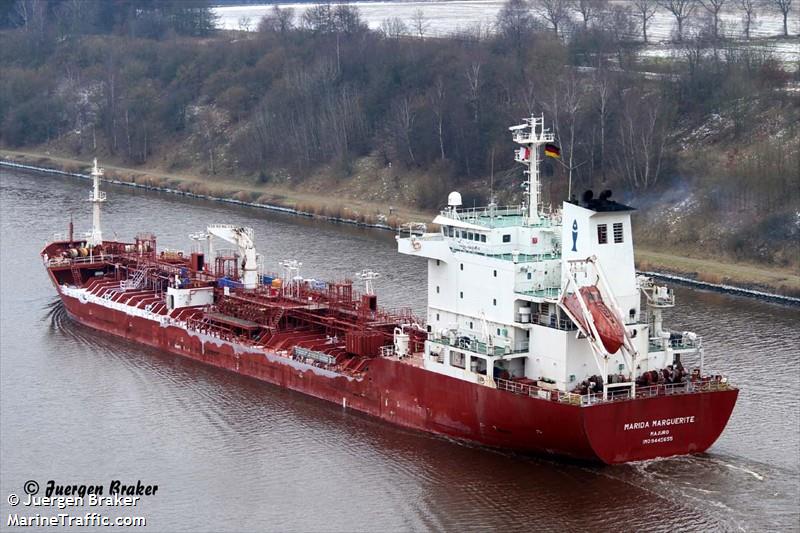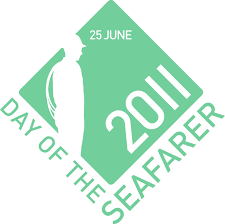Captain tied up in dark cabin for 21 days, engineer dipped in water till he fainted.
By Smita Nair of Express India
For 21 days, Mahadeo Makane was tied to a wooden chair in the motorman’s cabin, deep in the belly of the ship he once captained, without food, water or light, and wearing just an unclean vest and shorts.
Waiting for death, Makane had begun to hallucinate when, he said, he drew inspiration from Papillon by Henri Charrière, a convicted felon who later crafted a legendary escape. “Papillon never lost hope. I had to keep the faith,” Makane, 53, says of the 21 days of “pure torture” at the hands of Somalian pirates.
 |
| Marida Marguerite (Photo: Vesseltracker.com) |
On World Maritime Day, Makane, captain of the German chemical tanker Marida Marguerite, told members of the shipping community about the ordeal he and his crew faced during the ship’s eight-month hijacking and the trauma that continues after their release.
Makane, one of many sailors who have lived such a nightmare, was chosen by the Directorate of General of Shipping to bring up the need for stress management, to beef up ships’ defences, and for governments to provide security to ships rather than rely on private agencies.
In those eight months, Makane told the audience, only prayers helped him remain positive. “Prayers, prayers and more prayers... I felt closer to God.”
Marida Marguerite, its crew comprising mostly Indians and including a Ukrainian, set sail in April 2010 from Mumbai along a route that included “Pirate Alley”, the Gulf of Aden. It was hijacked on May 8, 120 miles south of Salalah, Oman. Six pirates started to fire from a skiff, and alerts were sent to navies, but within minutes a pirate had climbed aboard and started banging on cabin doors.
“We did not understand their language. But then fear needs no language,” says Makane. An aircraft came hovering but had to pull back as the pirates were already in. The pirates had GPS and satellite phones and guided them to the Isle of Somalia, where they dropped anchor alongside other hijacked vessels.
“The first bunch took watches, gold chains, mobiles, laptops... everything that looked nice, boots, jackets, everything,” Makane says. “The second bunch goes for your food and juice. They do not leave even your undergarments.” Pirates from other ships, too, would come aboard to bathe and eat. “They would eat very little and waste the rest.” he says.
When the negotiators arrived, they spoke in broken English, asking about the cargo and nationalities so that they could work out a ransom.
The crew were tied to posts in various corners, clas only in undergarments. Even eye contact was taboo. “We would be kicked if they thought we were talking,” Makane recalls. “They tied cable wires on our hands and legs. It clots your blood and you go numb. We would be crying all day, with the numbness reaching our head. They would stand across the bridge and laugh wild, or they would watch movies on deck.” If someone shouted loudly, the pirates would stuff his head in a garbage bag. No sailor would be allowed to use the toilet for more than a minute.
One day, the pirates offered some of the crew a stimulant leaf, khat, to be chewed and swallowed with tea. It gave them a sense of euphoria. “They started talking to us, playing one against the other. The biggest test for human behaviour is at such times: everything changes, humanness, loyalty; it’s only about survival.”
The pirates started extracting information. Those who obliged, bribed with a phone call home or extra water, were made to suffer later. “Nobody escaped torture, though some were made to believe that they would be treated well. It was all a lie.”
On some days, the pirates would blindfolded the officers and fire in the air. “We would stand shivering. Each of us were told that the other one is dead,” Makane recalls.
“Our Ukranian engineer was tied to a rope and repeatedly submerged till he lost consciousness. I was put in a boat and taken far into the sea. My crew was told the captain is dead...”
Back home, his wife Sandhya and three teenage children took a decision not to go to the press. “We knew any desperation shown would cost the lives of the crew. Besides, the family of the captain is the most watched,” says Sandhya. Her daughter Shailaja, 18, who accompanied her everywhere she went looking for help, says “visits to politicians were of no help”.
The crew were finally released in December.
A ship owner at the ceremony said, “Imagine an aircraft being hijacked for a day, and the response. How is it that ships continue to be hijacked for months, and there is not much anyone can do?”
Makane is now at his Airoli home, having completed a trauma counselling course. Someday, says the sailor of 33 years, he will have to decide if he should continue. “Is it worth it?” he wonders. “I may return. But I need time to decide.”
OCEANUSLive.org


Information, Security, Safety; Shared